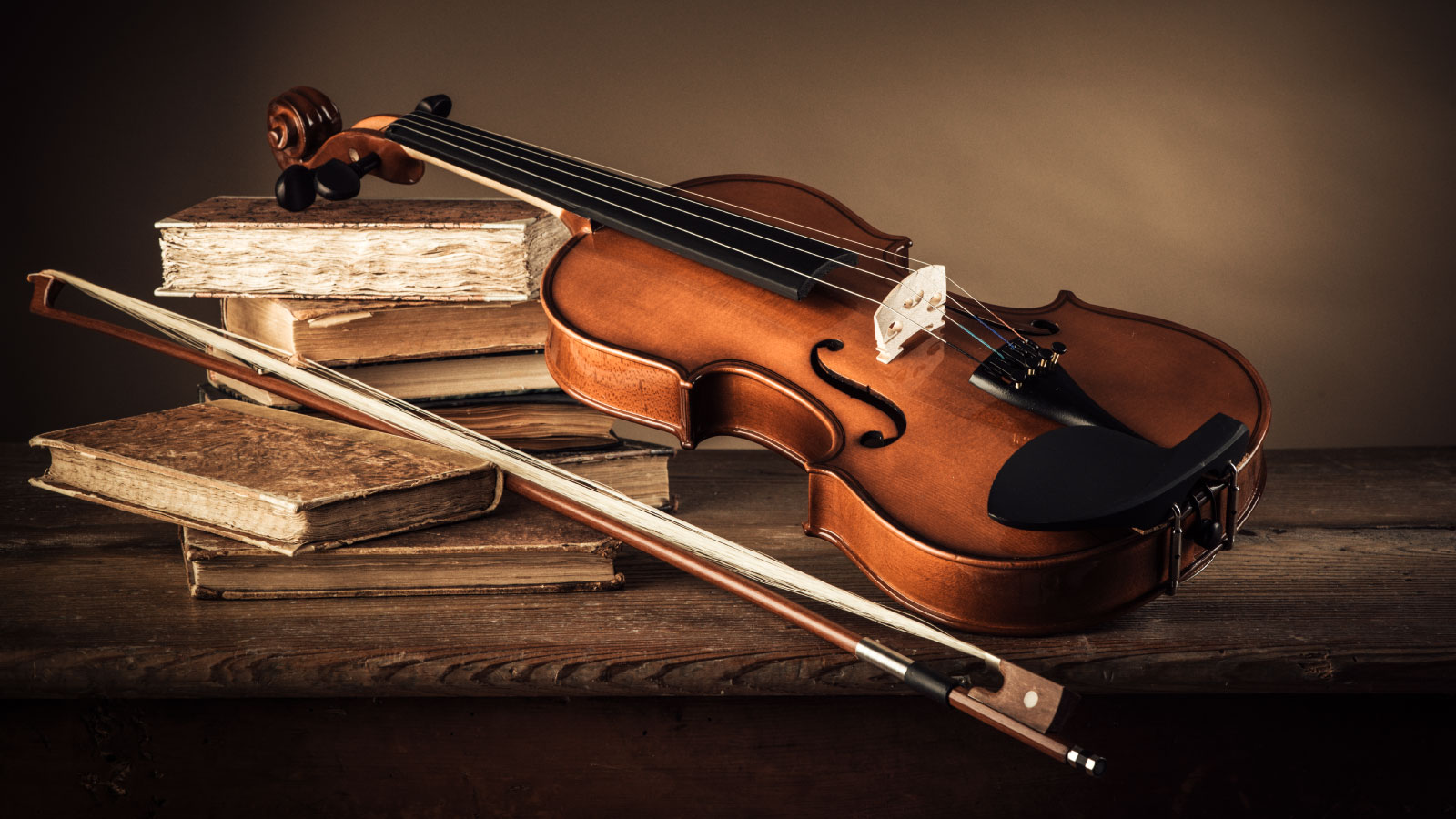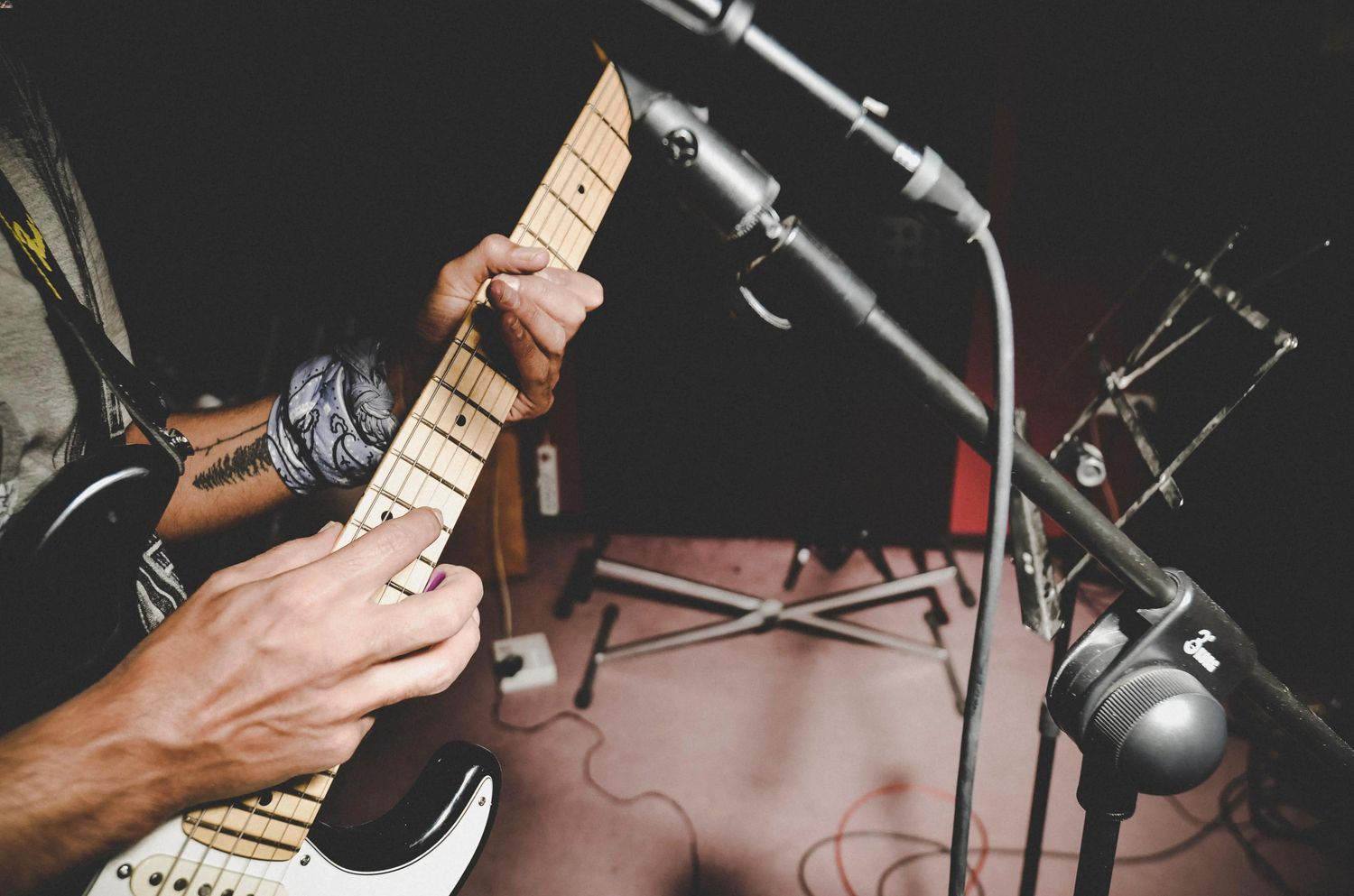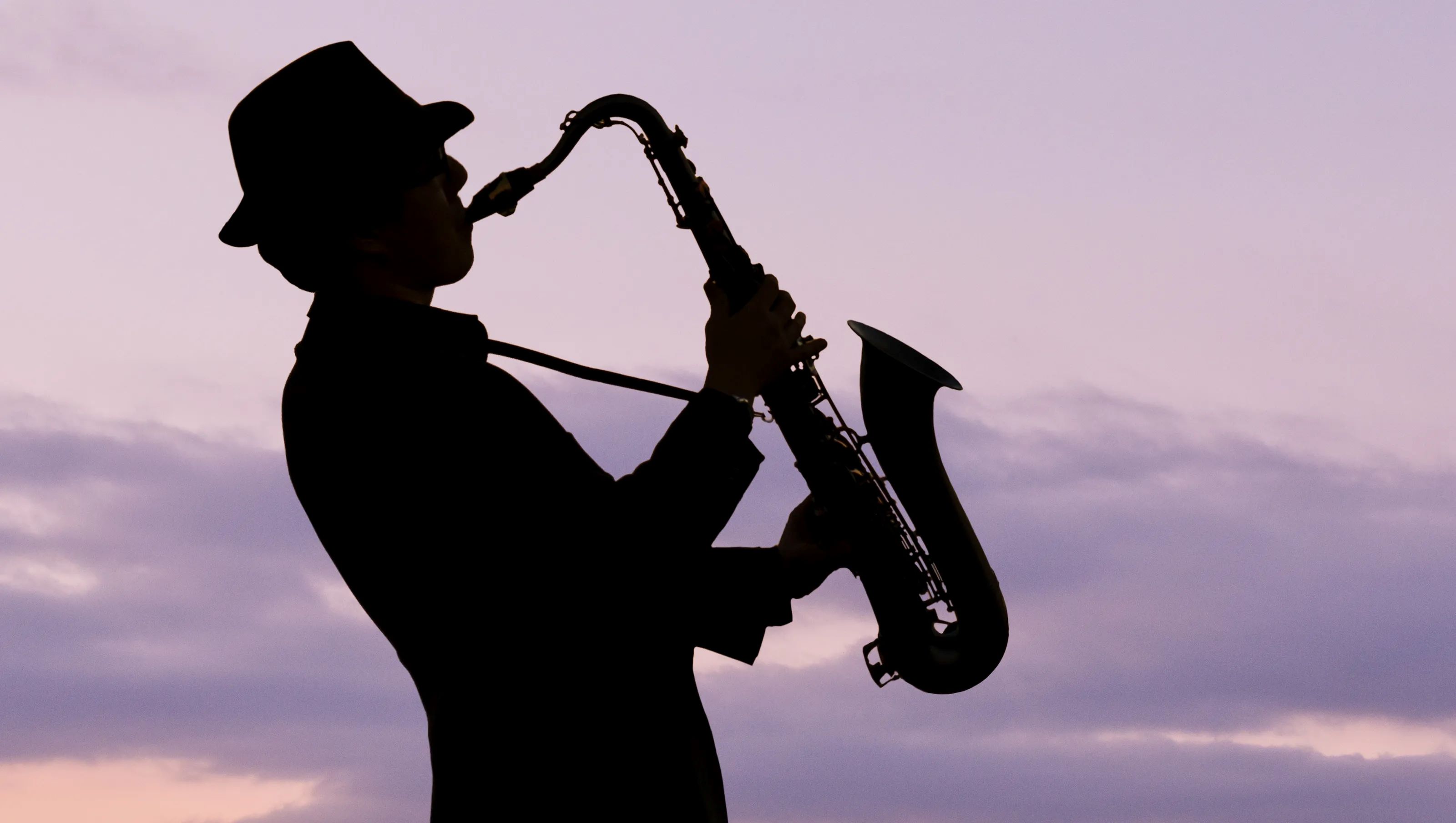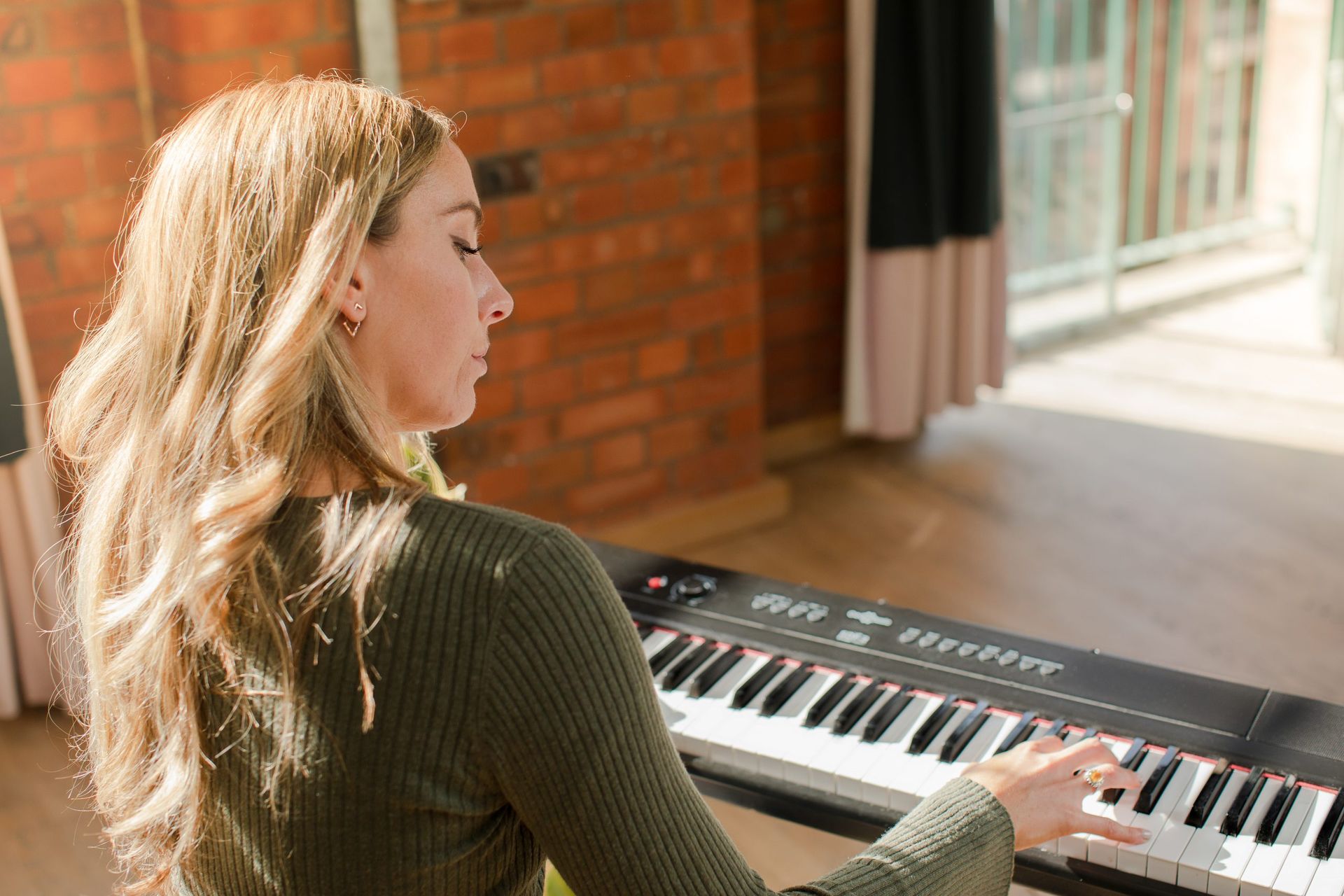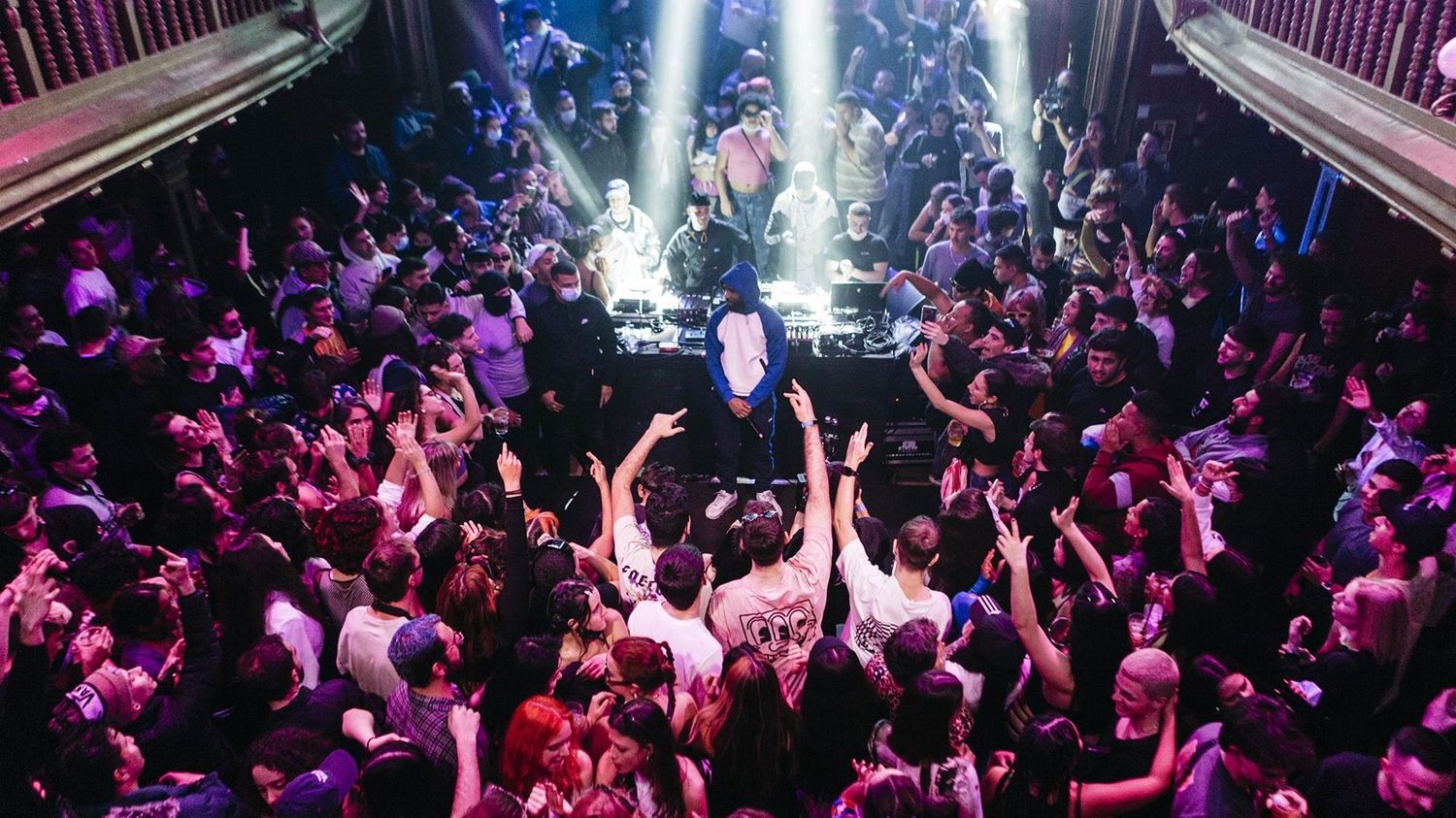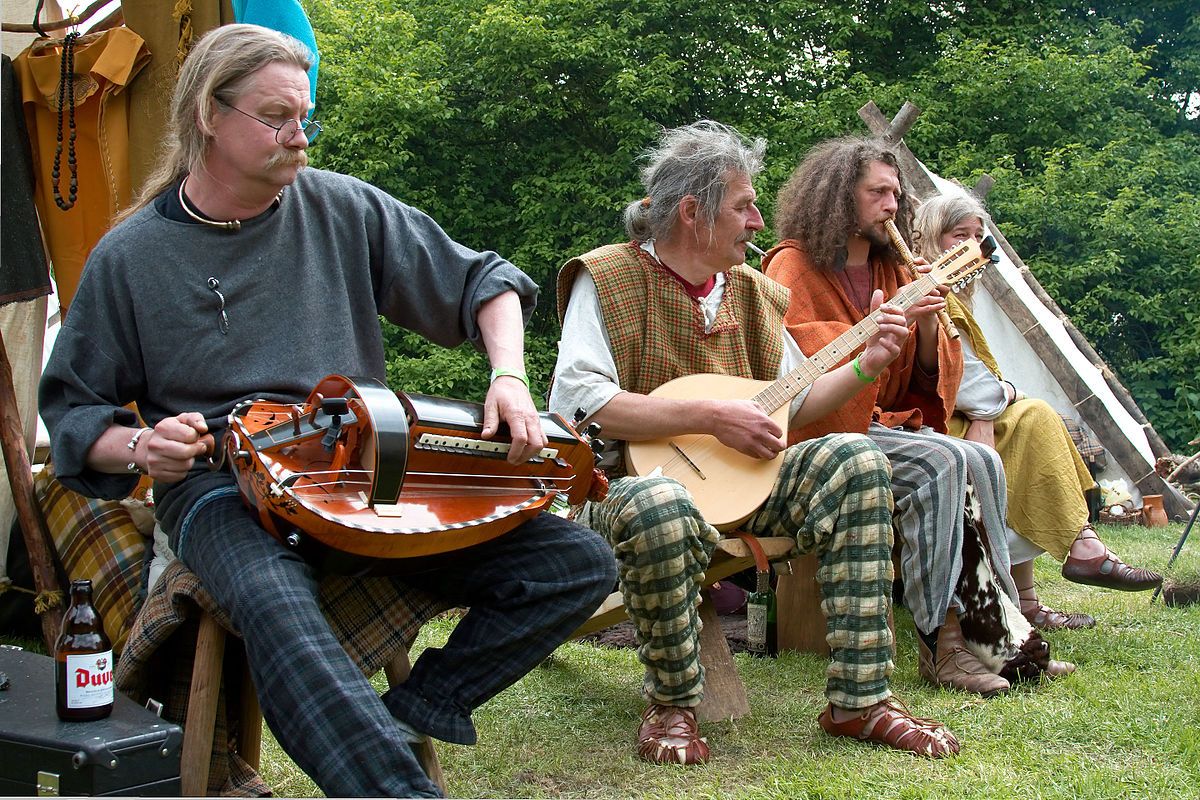Home>Production & Technology>Tempo>What Tempo Is Blues Music
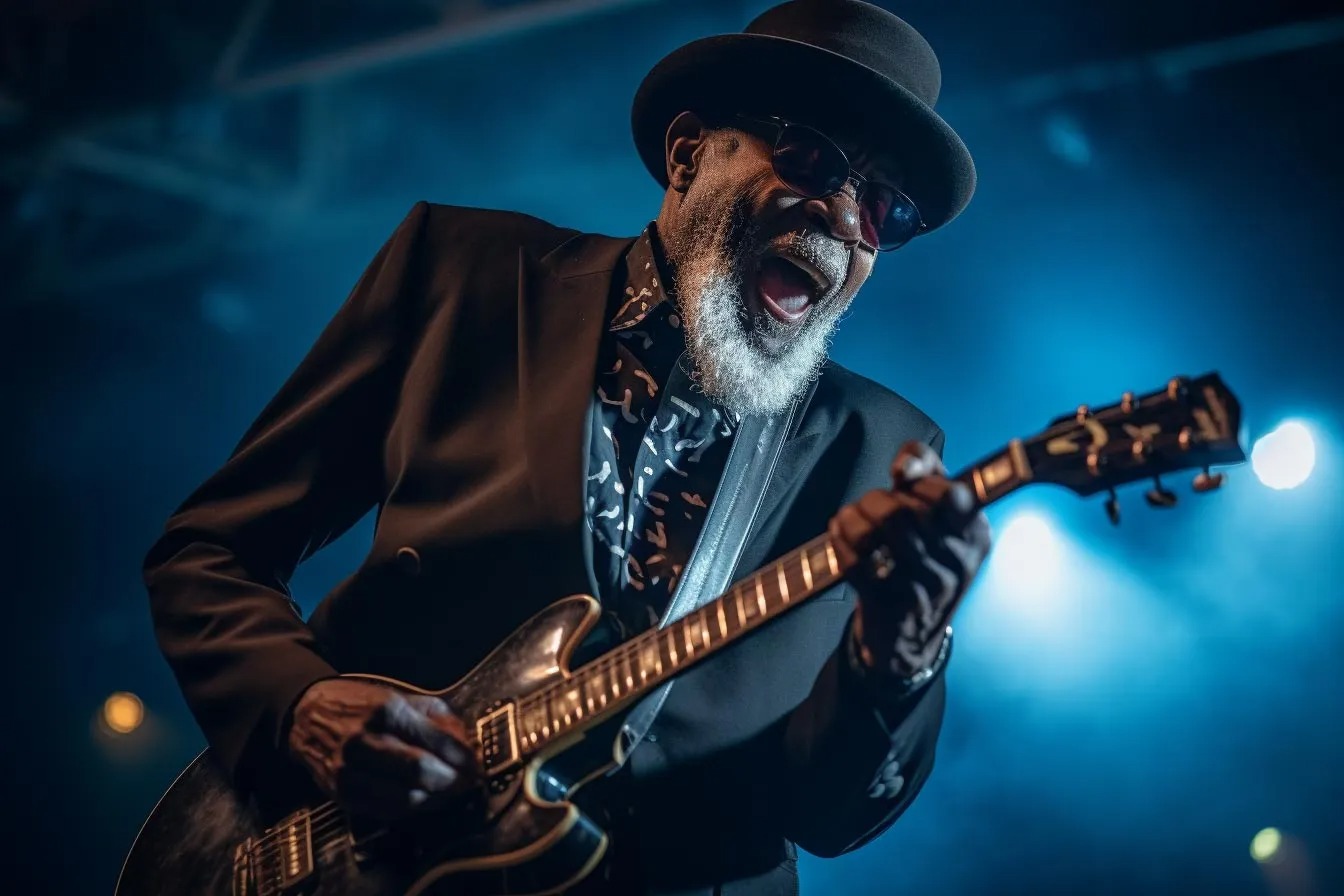

Tempo
What Tempo Is Blues Music
Published: December 10, 2023
Discover the tempo of blues music and how it sets the rhythm for soulful melodies and heartfelt lyrics. Uncover the perfect beat that defines the essence of blues.
(Many of the links in this article redirect to a specific reviewed product. Your purchase of these products through affiliate links helps to generate commission for AudioLover.com, at no extra cost. Learn more)
Table of Contents
- Introduction
- The Origins of Blues Music
- Characteristics of Blues Music
- The Role of Tempo in Blues Music
- Understanding Different Tempos in Blues Music
- Commonly Used Tempos in Blues Music
- Tempo Variation in Blues Music
- The Influence of Tempo on Blues Music’s Mood and Feel
- Notable Blues Songs and Their Tempos
- Conclusion
Introduction
Blues music is a genre deeply rooted in African-American culture, with a rich and storied history that spans over a century. Its soulful melodies, expressive lyrics, and distinct rhythmic patterns have captivated generations of music lovers. One key element that plays a crucial role in shaping the essence of blues music is tempo.
Tempo refers to the speed and pace at which a piece of music is played. It can vary from fast and energetic to slow and melancholic, and each tempo creates a unique mood and feel. In the context of blues music, tempo plays a vital role in showcasing the emotions and narrative of the lyrics, as well as influencing the overall groove and rhythm of the song.
The origins of blues music can be traced back to the deep South of the United States, particularly to African-American communities, often born out of the hardships and struggles faced by its people. The music frequently expressed themes of heartbreak, loneliness, poverty, and oppression, providing a voice to those who felt marginalized.
Blues music became highly influential in the early 20th century, with artists like Robert Johnson, B.B. King, Muddy Waters, and Etta James shaping the genre and setting the stage for its popularity. The music evolved and incorporated various elements from African music, gospel, and jazz, resulting in its distinctive sound and style.
As blues music developed, it became evident that tempo played a crucial role in conveying the intended emotions and atmosphere of the songs. The tempo could either amplify the cathartic experience or create a more contemplative mood. The choice of tempo has a significant impact on the way the listener perceives and connects with the music.
In the following sections, we will explore the different characteristics of blues music, delve into the role of tempo within the genre, and examine how varying tempos contribute to the overall mood and feel of blues music.
The Origins of Blues Music
The roots of blues music can be traced back to the late 19th and early 20th centuries in the African-American communities of the Southern United States, specifically in regions such as Mississippi, Louisiana, and the Mississippi Delta. It emerged as a rich cultural expression of the African-American experience, showcasing the struggles, joys, and resilience of a community marked by slavery, segregation, and economic hardship.
The origins of blues music can be linked to several different sources, including traditional African music, spirituals, work songs, and field hollers. These musical traditions were deeply ingrained in African-American culture and were passed down through generations. As African-Americans faced the horrors of slavery, music became a powerful means of survival, comfort, and self-expression.
The blues, as a distinct genre, began to emerge in the late 19th century, with influences from African music fused with European musical structures and instruments. This blend gave birth to a new form of music characterized by its raw emotions, heartfelt lyrics, and unique chord progressions.
One of the earliest forms of blues music was the Delta blues, which originated in the Mississippi Delta region. It was characterized by its sparse instrumentation, often featuring only a guitar and vocals. Artists like Charley Patton, Robert Johnson, and Son House played a pivotal role in popularizing Delta blues and shaping its distinctive sound.
Another influential style of blues music was the urban blues, which emerged in cities like Chicago, Detroit, and Memphis, during the Great Migration of African-Americans from the rural South to urban areas in search of better opportunities. The urban blues brought a new energy and sophistication to the genre, incorporating electric guitars, brass instruments, and a faster tempo.
Throughout its early history, blues music served as a form of cultural expression and a way to communicate the experiences and emotions of African-Americans. It provided a sense of identity, community, and catharsis, giving voice to the struggles and joys of everyday life.
Today, the influence of blues music can be heard in many genres, including rock ‘n’ roll, jazz, soul, and rhythm and blues. Its powerful legacy and significance continue to resonate with audiences worldwide, reminding us of the profound impact that music can have on society and culture.
Characteristics of Blues Music
Blues music is characterized by several distinct features that contribute to its unique sound and feel. Understanding these characteristics is key to appreciating and recognizing blues music when listening to it.
One of the defining characteristics of blues music is its 12-bar blues structure. This structure consists of three lines of four measures each, with a specific chord progression. It follows a I-IV-V chord progression, creating a familiar and predictable pattern that serves as the backbone of many blues songs.
Another key aspect of blues music is its emphasis on improvisation. Blues musicians often rely on their skill and creativity to improvise solos and melodies within the framework of the song. This improvisational element adds a sense of spontaneity and individual expression to the music, making each performance unique.
Blues music is renowned for its soulful vocals, characterized by passionate and heartfelt delivery. Blues singers often employ techniques such as bending and sliding notes to evoke strong emotions and convey the rawness of the lyrics. The lyrics themselves are often introspective, reflecting on personal experiences, pain, love, and resilience.
The instrumentation in blues music is typically simple yet powerful. Traditional blues ensembles consist of a vocalist, guitar, bass, and drums. The guitar plays a prominent role, with both acoustic and electric guitars used to create the signature blues sound. The bass and drums provide a rhythmic foundation, while additional instruments like harmonicas and pianos are also common in blues arrangements.
Rhythm is a fundamental aspect of blues music. The rhythm in blues is often laid-back and groovy, with a relaxed swing that encourages listeners to tap their feet and sway along. It is this infectious rhythm that gives blues music its undeniable charm and makes it so enjoyable to listen to.
The lyrics in blues music often revolve around themes of heartbreak, loneliness, love, and the human condition. It is through these lyrics that blues musicians connect with their audience, sharing their own experiences and emotions. Whether it’s a tale of lost love or an expression of resilience in the face of adversity, the lyrics in blues music are deeply relatable and evoke a wide range of emotions.
Overall, blues music combines powerful vocals, emotive lyrics, improvisation, and a distinct rhythm to create a captivating and soul-stirring experience. Its timeless appeal has made it one of the most influential genres in the history of music, touching the hearts and souls of listeners around the world.
The Role of Tempo in Blues Music
Tempo plays a vital role in shaping the essence and impact of blues music. It has the power to set the mood, evoke emotions, and define the overall groove and feel of a blues song. Understanding the role of tempo in blues music is key to appreciating its nuances and experiencing its full range of emotions.
Tempo refers to the speed at which a piece of music is played. In blues music, it can vary from slow and melancholic to upbeat and lively. Each tempo choice creates a distinct vibe and atmosphere, influencing the listener’s emotional response.
Slower tempos, often referred to as “slow blues,” are characterized by a relaxed and laid-back feel. These tempos allow for the full expression and contemplation of the lyrics. Slow blues tempos create a sense of longing, introspection, and emotional depth. The deliberate pace of the music allows the listener to fully immerse themselves in the lyrics and feel the raw emotions conveyed by the artist.
On the other end of the spectrum, faster tempos, known as “uptempo” or “shuffle blues,” bring energy, excitement, and a more lively feel to blues music. These tempos often feature a driving rhythm and encourage listeners to tap their feet, nod their heads, and let loose on the dance floor. Uptempo blues tempos are associated with a sense of joy, celebration, and even defiance. They inject a dynamic and vibrant quality into the music, eliciting a strong physical response from the audience.
It’s important to note that tempo in blues music is not solely limited to slow or fast. There is a wide range of intermediate tempos that can be explored, each with its own unique character and mood. These medium tempos provide versatility and allow for a variety of expressions within the genre. They can convey a sense of nostalgia, contentment, or even a bittersweet feeling.
The choice of tempo in blues music is often a creative decision made by the artist or band. It is influenced by various factors, including the lyrical content, the desired emotional impact, and the style or subgenre of blues being performed. The tempo sets the stage for the story being told, providing a foundation for the vocals, guitar solos, and other instrumental elements to weave their magic.
Ultimately, tempo in blues music serves as a powerful tool to evoke different emotions, convey the songwriter’s intent, and engage the listener on a deep and visceral level. Whether it’s a slow and mournful ballad or an uptempo foot-stomping composition, the tempo of blues music is a vital element that adds to its richness, versatility, and enduring appeal.
Understanding Different Tempos in Blues Music
Blues music encompasses a wide range of tempos, each contributing to the overall character and emotional impact of the music. Understanding and appreciating the different tempos in blues is essential for fully experiencing the diverse range of styles and moods within the genre.
One of the most common tempos in blues music is the slow blues. This tempo is often characterized by a relaxed pace, allowing for the full expression of emotions and deep introspection. Slow blues tempos create a melancholic atmosphere, drawing the listener in with their raw and heartfelt delivery. Artists such as B.B. King and Albert King were masters of slow blues, captivating audiences with their soulful solos and poignant lyrics.
Another popular tempo in blues music is the medium blues. These tempos strike a balance between slow and fast, providing a versatile canvas for musical expression. Medium blues tempos are often associated with a sense of nostalgia and reflection, allowing the artist to explore different melodic ideas and create evocative compositions that resonate with listeners.
Uptempo or fast blues tempos bring energy and excitement to the music. These lively tempos showcase the dynamic and vibrant side of blues. Uptempo blues songs often feature driving rhythms, danceable grooves, and electrifying solos. Artists like Stevie Ray Vaughan and Buddy Guy are known for their ability to ignite the stage with their energetic performances in fast blues tempos.
Shuffle blues is another sub-genre within the blues that has its own unique tempo. The shuffle rhythm adds a distinct swinging feel to the music, with a syncopated pattern that creates a lively and infectious groove. Shuffle blues tempos can be found in both slow and fast blues songs, adding a touch of playfulness and rhythmic complexity to the music.
It’s important to note that tempo in blues music is not limited to specific BPM (beats per minute) ranges. The tempos can vary depending on the artist’s interpretation and the intended mood of the song. Some artists may opt for a slower or faster tempo to convey a particular emotion or to create a specific atmosphere.
By understanding and recognizing the different tempos in blues music, listeners can better appreciate the nuances and variations within the genre. Whether it’s the sorrowful beauty of a slow blues, the soulful reflection of a medium blues, or the high-energy groove of an uptempo blues, each tempo brings its own charm and contributes to the rich tapestry of blues music.
Commonly Used Tempos in Blues Music
Blues music encompasses a range of tempos that create diverse moods and styles within the genre. While there is no strict rule for the tempos used in blues, certain tempos have become commonly associated with different subgenres and eras of blues music.
One of the most commonly used tempos in blues is the medium tempo. This tempo provides a balanced and versatile foundation for blues musicians to express their emotions and showcase their musical skills. Medium tempos, often referred to as “mid-tempo blues,” allow for melodic exploration, intricate guitar work, and expressive vocal delivery. They strike a perfect balance between the introspective nature of slow blues and the energetic drive of uptempo blues.
Slow blues tempos are also widely used in blues music. These tempos set a leisurely pace, allowing for the full expression of deep emotions and lyrical storytelling. Slow blues often feature soulful and mournful vocals, powerful guitar solos, and a lingering sense of melancholy. This tempo invites listeners to immerse themselves in the heartfelt lyrics and connect with the rawness of the music. Slow blues tempos have been instrumental in defining the blues genre and remain a staple in its repertoire.
Uptempo blues tempos bring energy, excitement, and a sense of urgency to blues music. Often associated with the electrifying sounds of electric blues and Chicago blues, these faster tempos are characterized by lively rhythms, driving guitar riffs, and infectious grooves. Uptempo blues tempos are perfect for getting the audience moving and creating a vibrant and lively atmosphere during live performances.
Shuffle blues, with its distinct swing feel, has its own commonly used tempos. The shuffle rhythm, characterized by its syncopated pattern, adds a playful and infectious groove to blues music. Shuffle tempos can range from slow, like a relaxed stroll, to fast-paced and dynamic, creating a foot-tapping and danceable beat. Shuffle blues tempos are versatile and can be found in both classic blues recordings and contemporary blues compositions.
It’s important to note that the tempos used in blues music can vary greatly depending on the artist’s interpretation, the intended mood of the song, and the specific subgenre being performed. Each artist may have their own preferred tempos, allowing for individual expression and creativity within the genre.
Overall, the commonly used tempos in blues music, ranging from medium to slow to uptempo, create a diverse sonic landscape that captures the essence of the blues. Whether it’s the soulful exploration of medium blues, the deep emotional resonance of slow blues, or the energetic drive of uptempo blues, each tempo brings its own unique flavor to the blues genre, allowing artists to convey their stories and connect with audiences on a deep and powerful level.
Tempo Variation in Blues Music
One of the fascinating aspects of blues music is the wide range of tempo variations that can be found within the genre. From slow and introspective to fast and energetic, tempo variations in blues music add depth, complexity, and a dynamic quality to the overall musical experience.
Tempo variation within blues music allows artists to explore different emotions and musical textures. It provides them with the flexibility to infuse their songs with a range of moods and to tailor the tempo to suit the lyrical content and the desired impact on the listener.
One common approach to tempo variation in blues music is to begin a song with a slower tempo and gradually increase the pace as the song progresses. This technique, known as a tempo build, can create a sense of anticipation and excitement, drawing the listener deeper into the music. The transition from a slow tempo to a faster one can be particularly impactful, adding an element of surprise and intensity to the composition.
Conversely, artists may choose to begin a song with an uptempo groove and then transition into a slower tempo for a more contemplative and emotional section. This type of contrast in tempo variation allows the artist to explore different facets of a storyline or to create a sense of tension and release within the music.
Blues musicians also utilize tempo variation to highlight specific musical elements or to create an engaging musical dialogue. For example, a guitarist may showcase their technical expertise by playing lightning-fast solos in an uptempo blues song, while a vocalist may choose to slow down the tempo during a soulful and heartfelt section to enhance the emotional impact of the lyrics.
Tempo variation in blues music also serves as a tool for live performances. Artists can strategically vary the tempo throughout a set to maintain the interest and engagement of the audience. They may select a slower tempo to create an intimate and introspective atmosphere, drawing the crowd in close, and then transitioning to an uptempo rhythm to get everyone on their feet and dancing.
Ultimately, tempo variation is an essential aspect of blues music, enabling artists to convey a range of emotions, maintain listener engagement, and enhance the overall musical experience. It adds depth, complexity, and a sense of musical spontaneity to the genre, allowing for endless creative possibilities and ensuring that each blues performance is a unique and memorable event.
The Influence of Tempo on Blues Music’s Mood and Feel
The tempo of a blues song plays a significant role in shaping its mood, atmosphere, and emotional impact. Whether it’s a slow, mournful ballad or an uptempo, energetic groove, the tempo choice has a profound influence on the overall feel and emotional resonance of blues music.
When it comes to slow tempo blues, the music takes on a melancholic and introspective mood. The deliberate pace allows for the full expression of deep emotions, reflecting themes of heartbreak, sadness, and loss. Slow blues tempos create a sense of longing and introspection, drawing the listener into a world of emotional depths. The unhurried rhythm gives space for the lyrics and instrumental solos to breathe, intensifying the impact of the storytelling.
On the other end of the spectrum, faster tempo blues songs project a lively and upbeat feel. Uptempo blues tempos are often associated with joy, celebration, and a sense of defiance. The energetic rhythm and driving groove encourage listeners to tap their feet, nod their heads, and let loose on the dance floor. Uptempo blues can bring a sense of excitement and exhilaration, infusing the music with a contagious energy that leaves audiences uplifted and invigorated.
Medium tempo blues songs strike a balance between the emotional depth of slow blues and the vigor of uptempo blues. This tempo range allows for a versatile exploration of various moods within the blues genre. Medium tempos can convey a sense of nostalgia, contentment, or even a bittersweet feeling. They create a comfortable space for intricate solos, expressive vocals, and reflective storytelling.
Shuffle blues, characterized by its swing feel, adds a unique dimension to the mood and feel of blues music. The syncopated rhythm of shuffle blues tempos infuses a playful and infectious groove. Shuffle blues can evoke a sense of carefree enjoyment, as the swingy rhythm encourages listeners to sway and dance along. It creates a light-hearted and engaging atmosphere, where the music invites both musicians and audiences to participate in the rhythmic interplay.
The tempo choice in blues music is an intentional decision made by artists to convey specific emotions, intensify the impact of the lyrics, and create a particular ambiance. The tempo sets the tone for the narrative being told, the story behind the music, and the emotions being expressed. It guides the listener through a range of emotions and experiences, allowing them to connect deeply with the music.
Ultimately, the influence of tempo on blues music’s mood and feel cannot be overstated. Whether it’s the raw and introspective nature of slow blues, the high-energy excitement of uptempo blues, the versatile exploration of medium tempos, or the playful swing of shuffle blues, the tempo choice in blues music is a powerful tool that captivates listeners, evokes emotions, and brings the music to life.
Notable Blues Songs and Their Tempos
The blues genre boasts a rich repertoire of songs that have become iconic and influential over the years. These songs vary in tempo, showcasing the versatility and range of emotions within blues music. Let’s explore some notable blues songs and their corresponding tempos.
One of the most famous blues songs of all time is “The Thrill is Gone” by B.B. King. This song is a slow blues masterpiece, characterized by its mournful tempo and soul-stirring guitar solos. The slow tempo enhances the emotive quality of the lyrics, capturing the essence of heartbreak and loss. B.B. King’s masterful phrasing and expressive vocals, combined with the deliberate pace, create a captivating and melancholic atmosphere.
On the other end of the spectrum, we have “Sweet Home Chicago” by Robert Johnson. This upbeat and energetic blues classic is set to an uptempo groove. The fast tempo brings a lively and infectious feel to the music, inspiring listeners to tap their feet and dance along. The rapid guitar picking and enthusiastic vocals in “Sweet Home Chicago” exemplify the sense of joy and celebration that is characteristic of uptempo blues songs.
A notable medium tempo blues song is “Stormy Monday” by T-Bone Walker. This song embodies the mellow, reflective quality of blues music. The medium tempo provides space for T-Bone Walker’s smooth and soulful guitar playing, as well as his velvety vocals. The languid pace and the intricate musical interplay create a serene and evocative mood, capturing the essence of a laid-back blues vibe.
Shuffle blues is exemplified by songs such as “Dust My Broom” by Elmore James. This timeless blues tune features a lively and swinging shuffle rhythm. The shuffle tempo brings a playful and engaging feel to the music, showcased through Elmore James’ energetic slide guitar work and charismatic vocals. “Dust My Broom” is a prime example of how shuffle blues tempos can elevate a song with their upbeat and rhythmic groove.
It’s important to note that these songs represent just a fraction of the countless notable blues songs that exist. Blues music encompasses a vast and diverse array of tempos, each contributing to the storytelling, emotional impact, and overall artistry of the songs.
Whether it’s the slow and mournful beauty of “The Thrill is Gone,” the high-energy enthusiasm of “Sweet Home Chicago,” the reflective mood of “Stormy Monday,” or the playful swing of “Dust My Broom,” these notable blues songs illustrate the range of tempos within the genre. Each tempo choice serves as a powerful tool for the artists, enabling them to convey specific emotions, captivate audiences, and leave a lasting impact with their music.
Conclusion
Tempo is a fundamental aspect of blues music that significantly influences its mood, feel, and overall impact. From slow and introspective to fast and energetic, the choice of tempo in blues music sets the stage for emotional expression, storytelling, and musical engagement.
Blues music, with its roots deeply embedded in African-American culture, has evolved over the years, incorporating various tempos to create a diverse range of styles and emotions within the genre. Slow blues tempos captivate with their raw and heartfelt delivery, conveying themes of heartbreak, sorrow, and resilience. Uptempo blues tempos bring energy, excitement, and a sense of joyous celebration to the music, igniting the audience and encouraging them to groove along.
Medium tempos strike a balance, allowing for reflective exploration, versatile expression, and a rich blend of emotions. Shuffle blues tempos add a playful and swinging feel, infusing the music with infectious rhythms and engaging grooves.
Tempo variation within blues music enhances the storytelling aspects, creates tension and release dynamics, and keeps audiences captivated during live performances. It allows blues musicians to connect with their listeners on a deep and visceral level, evoking a wide range of emotions and creating a shared experience.
Notable blues songs like “The Thrill is Gone,” “Sweet Home Chicago,” “Stormy Monday,” and “Dust My Broom” exemplify the range of tempos found within the genre, showcasing the impact that tempo has on the mood, feel, and timeless appeal of blues music.
In conclusion, understanding and appreciating the role of tempo in blues music adds depth and richness to the listening experience. Whether it’s the slow and introspective melodies that touch our souls or the uptempo rhythms that make us dance, the tempo in blues music carries the power to transport us, evoke emotions, and bridge the gap between artists and audiences. It is this dynamic interplay between tempo and musical expression that continues to make blues music a profound and timeless art form.

